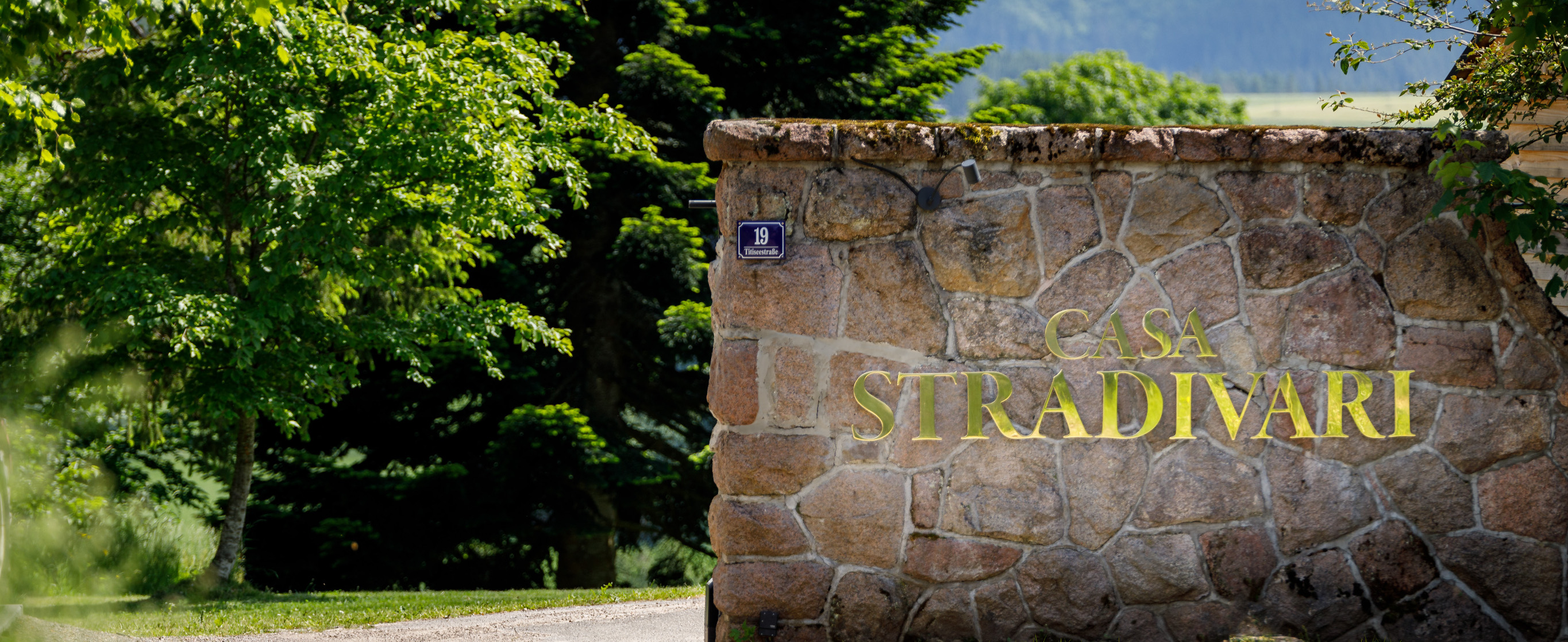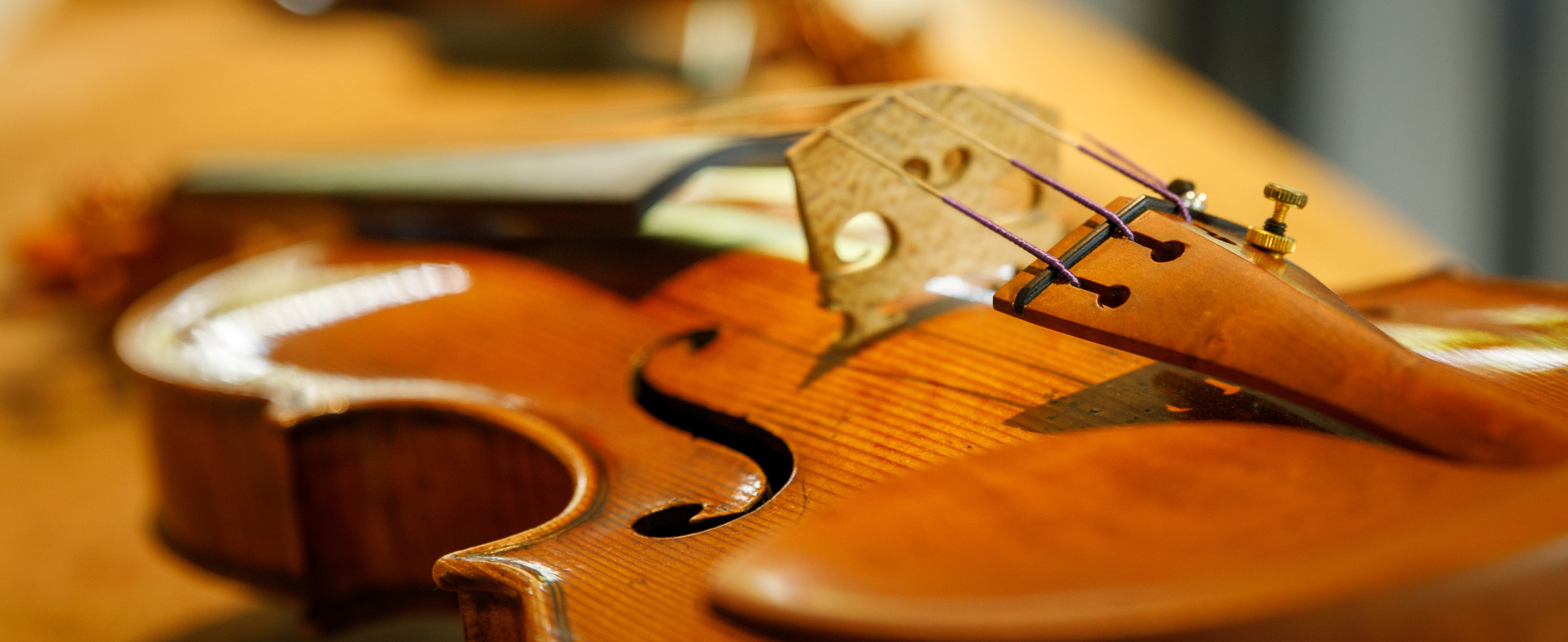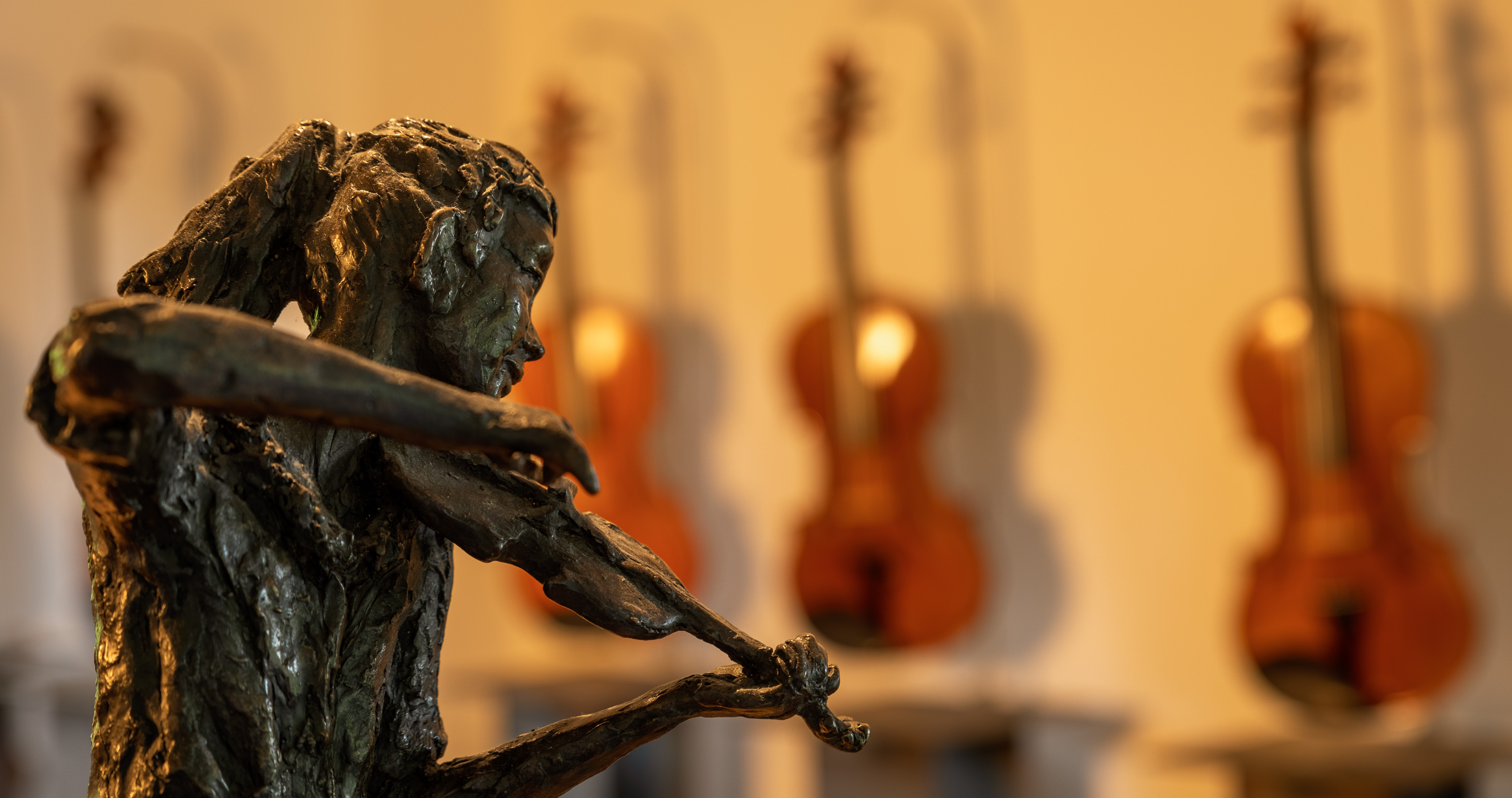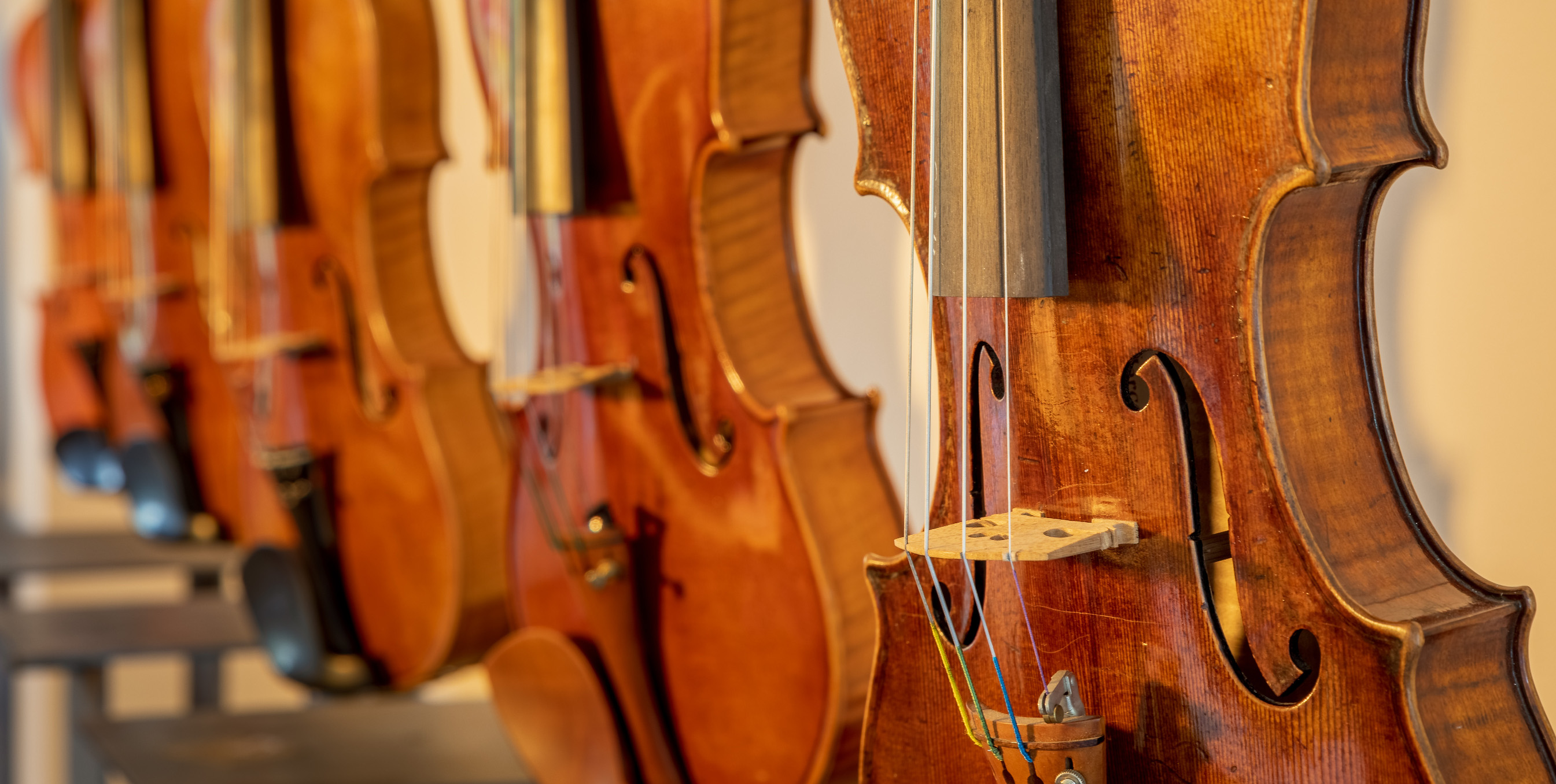Volume I-IV
300 years after the summit of his work, Antonio Stradivari’s name is more synonymous with the highest quality of craftsmanship and the grandest artistic ambition than ever before. For generations, luthiers have incessantly tried to copy his violins aiming to meet his level of excellence. The violins fashioned by that man from Cremona have always been the yardstick in this craft. Numerous scientists have tried—and continue to try—to unlock the “secret” of Stradivari’s oeuvre, be it by measuring the instruments, by examining the wood that went into their construction or, of course, by analysing the unique varnish that was used. Thus, Stradivari’s violins were the subject of an ever growing fascination, even though today, one has to concede that on closer inspection, there is no actual “secret”. It is true, however, that Antonio Stradivari was well ahead of his time regarding issues such as optimising the body of the instrument, refining their statics and perfecting the quality of the varnish.
Hence a myth surrounds Antonio Stradivari’s legacy, and rightly so, which has fascinated and inspired the greatest soloists over the centuries, such as Pierre Baillot, Mischa Elman, Jascha Heifetz, Bronislaw Hubermann, Joseph Joachim, Fritz Kreisler, Gidon Kremer, Yehudi Menuhin, Nathan Milstein, David Oistrach, Anne-Sophie Mutter, Itzhak Perlman, Julian Rachlin, Pierre Rode, Giovanni Battista Viotti and Jacques Thibaud—to name but a few.
Since 1998, I have devoted myself to publishing about and documenting string instruments. There has always been a great allure to us in preserving these precious items for generations to come and in making them available to a broader public by using the newest technical advances in photography and printing, applied in a picture library and illustrated books. While the fast pace of developments in the field of digital photography appeared to be a challenge at first, it quickly turned into a chance to arrive at more perfect, more true-to-life representations.
Over the many years of searching for appropriate instruments for the book series “Italian & French Violin Makers”, I was offered “Stradivaris” more and more frequently. It did not take long for the idea to occur to write a monography about this great Cremonese master. At the beginning of this project, none of us foresaw the high worldwide interest which it would be met with. Furthermore, so many colleagues, musicians, museums and institutions offered help beyond all limits, which considerably helped us in our work and research. We were delighted when our Stradivari project grew beyond the three volumes of its original conception, and today, after finishing the prepress processes for the present four volumes, it is our express wish to record the remaining instruments that have not yet found their way into the publication and to publish them in supplementary volumes.
A project of this scope requires a team of specialists. I feel blessed because every single member of our team proved to be a stroke of luck, and I want to thank them all for their extraordinarily competent, reliable and amicable cooperation.
We visited the major museums and collections in Europe and the United States of America. His sophisticated and sensitive way of representing string instruments convinced the responsible parties and made a favourable response to our project possible.
Our long-standing association with Florian Leonhard allowed us to have an internationally renowned Stradivari expert among our ranks. I am particularly indebted to him for his extraordinary competence in this field and his extensive help in acquiring numerous instruments, many of which had already passed through his hands. In his capacity as a conservator, as well, Florian Leonhard was invaluable in evaluating the instruments. Last, but not least, his comprehensive piece “Antonio Stradivari: His World and Legacy” significantly adds to the value of this publication. Furthermore we are delighted that we could spark the enthusiasm of two other internationally established experts to provide their knowledge of Antonio Stradivari:
Carlo Chiesa is well-known to most connoisseurs of Italian violins not only because of his comprehensive publication about Stradivari’s will, which he discovered, but also because of numerous other publications that shed light on many facets of lutherie. His essay “Antonio Stradivari” particularly deals with Stradivari’s oeuvre in relation to contemporaneous other Cremonese luthiers; another focus lies on his family. Thus, this important aspect of Stradivari is also covered appropriately in our work.
Simon Morris, director of J & A Beare Ltd., contributes significantly to this publication with an article about “The Preservation of Antonio Stradivari’s Instruments”. For several decades, J&A Beare Ltd., source of much expertise in the field, has been a fixture in the resorts of preserving and dealing with Cremonese string instruments. We are grateful to be able to profit from this long-established enterprise’s extensive experience. In the area of printing, there has been a series of enormous improvements over the last few years. For the first time, we chose the so-called “drip-off technique” to represent the instruments in this publication, a technique which only recently entered the market in a refined version and which was implemented impressively on “Heidelberg” machines by our printing company, welzel + hardt.
Using the drip-off technique makes it possible for us to represent the violin varnish in a way that is very close to the original. To achieve that goal, a special matt lacquer for oil print is put in the last inking station of the printing machine and is applied to the areas of the printing template that are to be mattr. In the next process. a thin gloss varnish is applied to the whole page. This intensifies the luminous power of the instruments’ varnish, which is enhanced by the gloss paper used in this publication.
This thin gloss varnish then completely drips off of the areas to which the matt lacquer was applied. Due to the different textures of the surfaces and the stark contrast between matt and glossy areas, the pictured instruments can be printed in their natural appearance without having to revert to artificial and distorting colour effects. Unnatural reflective disturbances, which frequently occur when incident artificial light is refracted and which makes it harder to view pictures, are completely eliminated when the “drip-off technique” is implemented.
What is more, the “staccato rastering process” leads to an extremely accurate reproduction with undisturbed pictures characterised by minute details without rosette patterns, raster moir. or restrictions or sudden leaps in tonal value.
As in my other publications, we decided to use a “natural white” for the backdrop of this publication as any other background colour would have distorted the impact of the instruments’ colours, and experience shows that dark background colours tend to tire one’s eyes over a period of time. We have refrained from giving measurements for the thickness of the instruments’ bellies and backs, just as we did in earlier publications. These measurements would have been purely speculative as it is probable that the thickness of the bellies and backs of a large number of the instruments could have been subject to additional work over the centuries.
For the DVD, we recorded soloist Koh Gabriel Kameda playing on his 1727 Stradivari violin ‘Holroyd’. He impressively elucidates the sound quality of a Stradivari and allows for an “audible experience”.
Regarding beauty and sound quality, not every Stradivari is superior to all other instruments, like those made by Andrea Amati, Giuseppe Guarneri del Gesù, G.B. Guadagnini or Francesco Pressenda. It is imperative to bear in mind the understandable quality variations considering the fact that an estimated 1000-1200 instruments were produced. The aging processes may have affected some instruments more than others. But there have always been collectors who took care of their “treasures” for as long as they could and kept them safe from damage. Each Stradivari has its own history, and today the majority of instruments proudly bear the names of famous former owners as indications of their individual, often partly eventful pasts.










